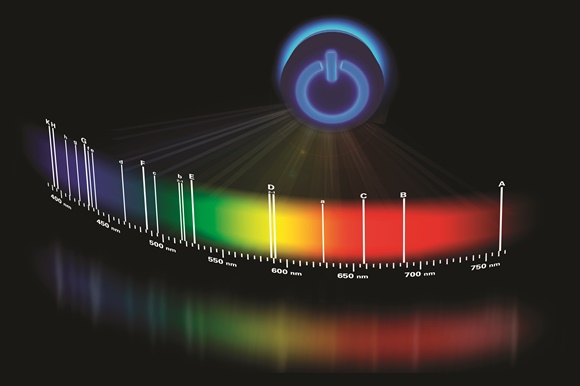Using light to control cannabinoid receptor 1 signaling
A little over a decade ago, a fever pitch swept across the field of neuroscience with the development of a technique called optogenetics. Thanks to advances in cellular and molecular neuroscience, researchers harvested the power of light to temporally and spatially control microcircuits in the brain.1
Channelrhodopsins are proteins that respond to light. When activated, they act as a door to the cell, allowing certain molecules in; when inhibited, they keep these molecules out.2 Through genetic engineering, these types of proteins can be introduced into the cell to control activity with light–and this is particularly helpful for studying certain types of cells and receptors and their contribution to behaviors or types of disease.
Related to optogenetics is a more recent method called photopharmacology in which small photoresponsive molecules or “molecular photoswitches” can change the structure of proteins when exposed to light. These photoswitches allow researchers to manipulate cellular activity remotely without genetically reprograming the cell.3
Photopharmacology can be very helpful in creating therapeutics that specifically target diseased, but not healthy cells–a current limitation of traditional pharmacology. Current therapies flood the entire body, meaning that there’s no way to control which cells are exposed to the effects of the drugs; this could lead to unwanted side effects.
Both methods may also be helpful in furthering our understanding of cannabinoid receptor function.
The cannabinoid 1 (CB1) receptor is highly expressed in the central nervous system. Since cannabinoids are lipophilic (fat-loving), pharmacological activation and inhibition remains challenging, as cannabinoids are not transported into the cell like other chemical messengers, therefore making their distribution difficult to control.4,5 To overcome this technical barrier, a group of researchers from ETH Zurich pursued study of CB1 receptors by taking advantage of photopharmacology.
The researchers first designed and created photoswitchable variants (or derivatives) of THC, as this cannabinoid binds to and activates CB1 receptors. A light-sensitive molecule called a chromophore was attached to two of these variants, allowing them to use different wavelengths of light to activate or inactivate the CB1 receptors. They confirmed these effects by measuring electrical activity inside the cells and found that it corresponded with the light pulses administered.
“This work is our successful proof of principle: light-sensitive THC variants are a suitable tool for controlling and influencing CB1 receptors,” said Michael Schafroth, a doctoral student and author of the study, in a press release.
A second group of researchers used optogenetics to explore how the CB1 receptor influences cocaine self-administration by selectively expressing light-sensitive receptors in a reward center of the brain.6 A third study utilized optogenetics to better understand how CB1 receptor activation modulated different types of neurotransmitters (chemical messengers) in an area of the brain important for regulating mood.7
Use of photopharmacological and optogenetic techniques hold enormous potential in helping researchers learn about the endocannabinoid system by controlling when and where receptors are activated or inactivated. These findings may also contribute to a better understanding of the therapeutic actions of cannabis through CB1 receptor contributions, as well as CB2 receptors and several other receptor types through which both endogenous and exogenous cannabinoids exert their effects.
References
- Bamberg, E., et al., “Introduction: Optogenetics and Photopharmacology.” Chem Rev. vol.118, no.21, 2018, pp. 10627-10628. (impact factor: 52.613; cited by: 1)
- Camporeze, B., et al., “Optogenetics: The New Molecular Approach to Control Functions of Neural Cells in Epilepsy, Depression and Tumors of the Central Nervous System.” Am J Cancer Res. vol.8, no.10, 2008, pp. 1900-1918 (impact factor: 9.130; cited by: 1)
- Hoorens, M.W.H., & Szymanski, W. “Reversible, Spatial and Temporal Control over Protein Activity Using Light.” Trends Biochem Sci. vol.43, no.8, 2018,
pp. 567-575 (impact factor: 14.273; cited by: 9) - Westphal, M.V., et al. “Synthesis of Photoswitchable Δ9‑Tetrahydrocannabinol Derivatives Enables Optical Control of Cannabinoid Receptor 1 Signaling.” J Am Chem Soc. vol.139, 2017, pp. 18206-18212 (impact factor: 14.695; cited by: 27)
- Elmes, M.W., et al. “Fatty Acid-binding Proteins (FABPs) Are Intracellular Carriers for Δ9-tetrahydrocannabinol (THC) and Cannabidiol (CBD).” J Biol Chem. vol.290, no.14, 2015, pp. 8711-8721 (impact factor: 4.010; cited by: 74)
- Han X., et al. “CB1 Receptor Activation on VgluT2-Expressing Glutamatergic Neurons Underlies Δ9-Tetrahydrocannabinol (Δ9-THC)-Induced Aversive Effects in Mice.”
Sci Rep. vol.7, 2017, pp. 1-15 (impact factor: 4.525; cited by: 11) - Geddes, S.D., et al., “Target-specific Modulation of the Descending Prefrontal Cortex Inputs to the Dorsal Raphe Nucleus by Cannabinoids.” Proc Natl Acad Sci USA. vol.113, no.19, 2016, pp. 5429-5434 (impact factor: 9.580; cited by: 20)








